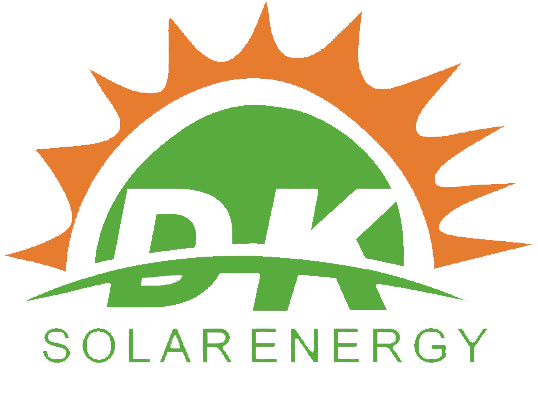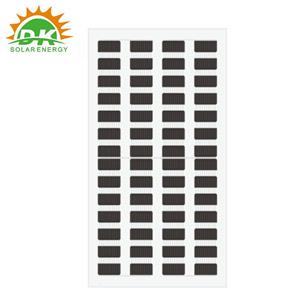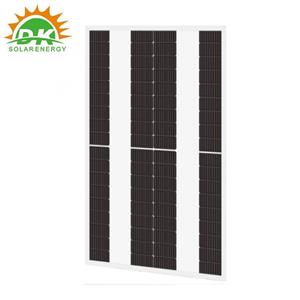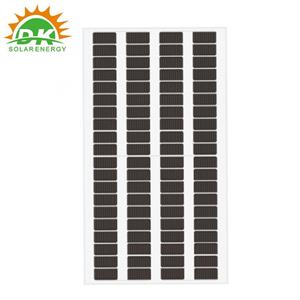What are the advantages and disadvantages of the flexible solar modules with adhesive backing ?
Gerenally speaking,the installation of flexible solar modules requires glueing application, but there are also those with self-adhesive tape on the back. So what are the advantages and disadvantages of this self-adhesive tape method for flexible solar panels ? Please review the below details:
I. Advantages
- Ease of installation and improved efficiency
Eliminating the need for traditional brackets, drilling, or welding, the modules can be fixed directly via adhesive tape, significantly simplifying the construction process. For example, on lightweight roofs such as color steel tiles or glass houses, installation steps can be reduced by over 70%, and construction efficiency can be improved by more than 40%. Meanwhile, the cost of bracket materials and installation labor is saved, reducing the overall project cost. - Adaptability to complex scenarios and expanded application boundaries
The flexibility of the tape allows it to adhere to curved surfaces (e.g., truck roofs, church spires), irregular surfaces (e.g., grain silo facades, curved curtain walls), or lightweight substrates (e.g., plastics, films). This solves the installation challenges of traditional rigid modules on irregular structures, promoting the application of photovoltaics in building-integrated photovoltaics (BIPV), vehicle-mounted energy, portable devices, and other scenarios. - Lightweight and low-load advantages
Flexible modules with built-in tape typically weigh only 4-5kg/m² (compared to 15-30kg/m² for traditional glass modules). Combined with a bracket-free design, they can reduce roof load requirements to below 6kg/m², making them suitable for load-sensitive scenarios such as old buildings and light steel structures, avoiding renovation restrictions due to insufficient load-bearing capacity. - Reduced damage to base materials and waterproofing risks
No drilling or anchoring is required, avoiding physical damage to substrates such as roofs and vehicle surfaces, and reducing the risk of water leakage and corrosion. For example, in the renovation of concrete roofs, the combination of butyl tape and waterproof membranes can simultaneously address both photovoltaic installation and roof waterproofing issues. - Rapid adaptation to temporary or mobile scenarios
For temporary or mobile equipment such as RVs, tents, and emergency power supplies, tape-adhered modules can be quickly disassembled and reinstalled, balancing portability and stability (e.g., the rapid deployment of 110W vehicle-mounted flexible panels).
II. Disadvantages
- Limited long-term durability, dependent on environmental adaptability
The adhesion of the tape is significantly affected by temperature, humidity, and ultraviolet (UV) radiation: high temperatures (reaching 60-80℃ during module operation) may soften the tape, reducing bonding strength; humid and hot or strong UV environments may accelerate tape aging (ordinary butyl tape has a natural aging life of about 5-8 years, which needs to be extended to over 15 years through nano-modification). - High temperature sensitivity
Heating during module operation (typically 20-30℃ higher than ambient temperature) may subject the tape to long-term "thermal softening-cooling hardening" cycles, accelerating fatigue. Extreme low temperatures (e.g., below -40℃) may cause the tape to become brittle and lose adhesion, requiring special temperature-resistant tapes (such as 3M Ultra Barrier Film series) at a higher cost. - Difficulty in maintenance and replacement
Once adhered, the tape forms a tight bond with the base material. Removal may cause damage to the module's encapsulation layer or the base material surface, making it difficult to replace faulty modules individually. Maintenance costs are higher than those of bracket-mounted installations (where brackets can be disassembled with screws for replacement). - High requirements for base material compatibility
Adhesion is closely related to the smoothness, cleanliness, and material of the base surface: for example, oily surfaces reduce adhesion; porous concrete requires pre-treatment to avoid hollowing. Different substrates require matching specific tapes (e.g., acrylic foam tape for metals, butyl tape for plastics), increasing design complexity. - Difficulty in balancing cost and performance
High-performance weather-resistant tapes (e.g., water-resistant, UV-resistant, high/low-temperature resistant) cost 30%-50% more than ordinary tapes, which may offset part of the installation cost advantages. Choosing low-performance tapes to control costs will sacrifice durability, creating a "cost-lifespan" contradiction.
The core advantages of this technology lie in simplified installation, expanded application scenarios, and reduced load, making it particularly suitable for lightweight and irregular needs in distributed photovoltaics and mobile energy. However, its shortcomings focus on durability, temperature sensitivity, and maintenance convenience, which need to be gradually addressed through material improvement (e.g., nano-modified tapes), process optimization (e.g., heat dissipation structure design), and scenario adaptation (targeted selection of tape types). With the improvement of tape material weather resistance and cost reduction in the future, its application potential will be further unleashed.
Get the latest price? We'll respond as soon as possible(within 12 hours)
more products
News
Products
Featured Products
Contact Details




